
Andorra la Vella: The Gem of the Pyrenees
Discover Andorra la Vella, where majestic mountains meet rich culture and tax-free shopping in the heart of the Pyrenees.
Nestled in the heart of the Pyrenees mountains, Andorra la Vella is a charming mix of natural beauty and modern allure. As the capital city of Andorra, it offers visitors a unique blend of cultural heritage, stunning landscapes, and abundant shopping opportunities. The city is well-known for its picturesque streets, surrounded by majestic mountains, which create a perfect backdrop for a relaxing and memorable vacation. Andorra la Vella is a paradise for nature enthusiasts and adventure seekers alike. The surrounding mountains provide excellent opportunities for hiking, skiing, and mountain biking. The city's proximity to renowned ski resorts makes it a popular destination during the winter months, while the summer season offers countless trails and parks to explore. Beyond its natural wonders, Andorra la Vella boasts a rich cultural scene. Visitors can explore historic sites such as the Casa de la Vall, a 16th-century house that serves as the seat of the General Council of Andorra. The city is also home to a variety of museums, including the Perfume Museum and the Andorra la Vella History Centre. For those who enjoy shopping, the city's tax-free status attracts visitors looking for great deals on luxury goods, electronics, and fashion. The local cuisine is another highlight of Andorra la Vella. Traditional dishes, influenced by Spanish and French gastronomy, can be enjoyed at numerous restaurants and cafes scattered throughout the city. From hearty mountain stews to exquisite pastries, the culinary offerings are sure to delight any palate.
Local tips in Andorra la Vella
- Carry a map or use a navigation app, as the city's winding streets can be tricky to navigate.
- Visit in the off-season for fewer crowds and more affordable accommodation.
- Take advantage of the city’s tax-free status to shop for luxury items at lower prices.
- Try local dishes like trinxat (potato and cabbage stew) and coca (a type of pastry).
- Pack layers, as temperatures can vary greatly between day and night.
- Use public transportation or walk; the city is quite compact and easy to explore on foot.
Andorra la Vella: The Gem of the Pyrenees
Nestled in the heart of the Pyrenees mountains, Andorra la Vella is a charming mix of natural beauty and modern allure. As the capital city of Andorra, it offers visitors a unique blend of cultural heritage, stunning landscapes, and abundant shopping opportunities. The city is well-known for its picturesque streets, surrounded by majestic mountains, which create a perfect backdrop for a relaxing and memorable vacation. Andorra la Vella is a paradise for nature enthusiasts and adventure seekers alike. The surrounding mountains provide excellent opportunities for hiking, skiing, and mountain biking. The city's proximity to renowned ski resorts makes it a popular destination during the winter months, while the summer season offers countless trails and parks to explore. Beyond its natural wonders, Andorra la Vella boasts a rich cultural scene. Visitors can explore historic sites such as the Casa de la Vall, a 16th-century house that serves as the seat of the General Council of Andorra. The city is also home to a variety of museums, including the Perfume Museum and the Andorra la Vella History Centre. For those who enjoy shopping, the city's tax-free status attracts visitors looking for great deals on luxury goods, electronics, and fashion. The local cuisine is another highlight of Andorra la Vella. Traditional dishes, influenced by Spanish and French gastronomy, can be enjoyed at numerous restaurants and cafes scattered throughout the city. From hearty mountain stews to exquisite pastries, the culinary offerings are sure to delight any palate.
When is the best time to go to Andorra la Vella?
Iconic landmarks you can’t miss
Caldea Spa
Discover relaxation and wellness at Caldea Spa, Andorra's premier thermal baths, surrounded by stunning mountain vistas for the ultimate rejuvenating experience.
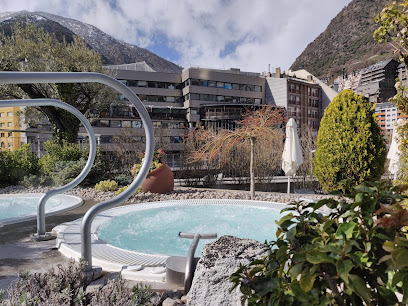
Mirador Roc Del Quer | Canillo
Explore the stunning landscapes of Andorra at Mirador Roc Del Quer – an observation deck that showcases breathtaking views of the mountains.

La Noblesse du temps - de Salvador Dalí
Discover La Noblesse du temps, Salvador Dalí's surrealist sculpture in Andorra la Vella, where art and culture come to life in stunning detail.

Parc Central
Explore the beauty of Parc Central, a tranquil park in Andorra la Vella, perfect for relaxation, family fun, and cultural experiences.

Jardins de Juberri
Explore the serene beauty of Jardins de Juberri, a breathtaking garden in Sant Julià de Lòria, perfect for relaxation and nature appreciation.
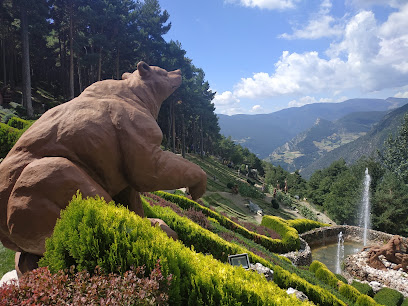
El Refugi Alpí
Experience the essence of Alpine dining at El Refugi Alpí, where exceptional fondue and a cozy ambiance await in Andorra la Vella.
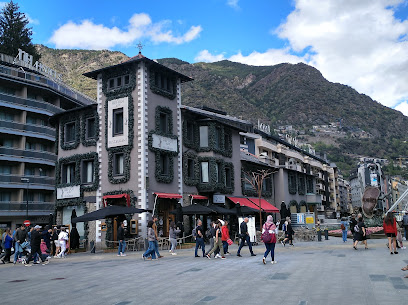
Chester
Discover Chester in Andorra la Vella, where quality fast food and delicious hamburgers come together in a vibrant setting for an unforgettable dining experience.

Casa de la Vall
Explore Casa de la Vall – A historic museum in Andorra la Vella showcasing the rich cultural heritage and unique political history of the principality.

Pont de la Margineda
Explore the historic Pont de la Margineda in Andorra la Vella, a stunning bridge that offers breathtaking views and rich cultural significance.

Madriu-Perafita-Claror Valley
Explore the breathtaking landscapes and rich cultural heritage of Madriu-Perafita-Claror Valley, a UNESCO World Heritage site in Andorra.

Church of Santa Coloma d'Andorra
Explore the Church of Santa Coloma d'Andorra, a unique blend of history and architecture with its iconic round tower and stunning frescoes.

Barri Antic Hostel & Pub
Experience the vibrant blend of comfort and camaraderie at Barri Antic Hostel & Pub, a must-visit spot in Andorra la Vella for every traveler.

Pont d'Engordany
Explore the stunning Pont d'Engordany, a captivating blend of history and breathtaking views in Escaldes-Engordany, Andorra.

Rec del Solà Trail
Discover the breathtaking Rec del Solà Trail in Andorra la Vella, where history and nature intertwine for an unforgettable hiking experience.

BORDA CAN ANDREU
Experience the delightful fusion of Catalonian and South Asian cuisine at Borda Can Andreu in Andorra la Vella.

Unmissable attractions to see
Mirador Roc Del Quer | Canillo
Discover the stunning panoramic views of Andorra at Mirador Roc Del Quer, a must-visit observation deck for tourists seeking breathtaking scenery.

Aigüestortes i Estany de Sant Maurici National Park
Experience the breathtaking beauty of Aigüestortes i Estany de Sant Maurici National Park, a natural paradise in the heart of Spain's Pyrenees.

Grandvalira
Experience the ultimate ski adventure at Grandvalira, Andorra's premier ski resort, offering stunning slopes and vibrant après-ski activities.

La Noblesse du Temps
Discover La Noblesse du Temps in Andorra la Vella, a stunning tribute to the passage of time amidst the beauty of the city.

Parc Natural del Cadí-Moixeró
Discover the stunning beauty of Parc Natural del Cadí-Moixeró, a premier hiking and nature destination in Barcelona, perfect for outdoor enthusiasts.

Parc Central
Explore the serene beauty of Parc Central, a lush urban park in Andorra la Vella, perfect for relaxation, picnics, and family outings amidst nature.

Grandvalira Estació de Ski Grau Roig
Experience the best of winter sports at Grandvalira Estació de Ski Grau Roig, a premier ski resort in the heart of the Pyrenees.

Sanctuary Basilica of Our Lady of Meritxell
Discover the Sanctuary Basilica of Our Lady of Meritxell, a serene pilgrimage site nestled in the Pyrenean mountains of Andorra, rich in culture and spiritual heritage.

Rasos de Peguera
Discover Rasos de Peguera, a stunning ski resort and hiking area in Barcelona's Catalonian mountains, perfect for year-round outdoor adventures.

Château de Montségur
Explore the rich history and breathtaking views at Château de Montségur, a captivating medieval fortress in the heart of the Ariège region.

Station de ski de Porté-Puymorens
Experience the thrill of skiing and the charm of alpine life at Porté-Puymorens, a top destination in the French Pyrenees.

Sant Joan de Caselles Church
Explore the historical charm of Sant Joan de Caselles Church, a stunning Romanesque gem nestled in the Andorran mountains, perfect for culture and history lovers.
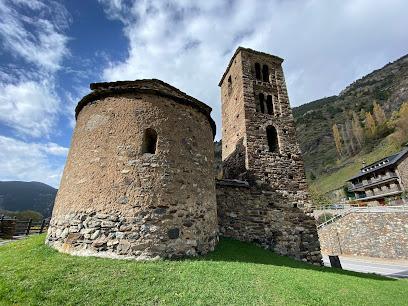
Casa de la Vall
Explore Casa de la Vall, a historic museum in Andorra la Vella, showcasing the rich cultural heritage and political history of this enchanting principality.

Palau de Gel d’Andorra
Discover endless fun at Palau de Gel d’Andorra, your ultimate destination for ice skating, swimming, and sports activities in Canillo.

Grandvalira Estació de Ski Soldeu
Experience the thrill of skiing and the beauty of nature at Grandvalira Estació de Ski Soldeu, the ultimate winter destination in the heart of the Pyrenees.

Essential places to dine
Restaurant 120 | Andorra la Vella
Experience culinary excellence at Restaurant 120 in Andorra la Vella—where local flavors meet international cuisine in a warm atmosphere.

El Refugi Alpí
Experience authentic fondue at El Refugi Alpí in Andorra la Vella – where traditional cuisine meets Alpine charm.

Restaurant Mama Maria | Andorra
Discover authentic Andorran flavors at Restaurant Mama Maria - where tradition meets taste in Andorra la Vella.

La Adelita Restaurante Mexicano
Experience authentic Mexican flavors at La Adelita Restaurante Mexicano in Andorra la Vella - A culinary gem for food lovers!

Restaurant L'Orri
Discover delectable dishes at Restaurant L'Orri: your go-to spot for tapas, burgers, and pizza in Andorra la Vella.

Pizzeria Primavera
Experience authentic Italian cuisine at Pizzeria Primavera in Andorra la Vella – where every pizza tells a story.

Chester
Experience Chester in Andorra la Vella: where gourmet hamburgers meet friendly service in a vibrant atmosphere.

Quarantuno Pizzeria
Experience authentic Italian cuisine at Quarantuno Pizzeria in Andorra la Vella – where every bite tells a story.

Arrosseria Andorra Restaurant
Discover the culinary treasures of Arrosseria Andorra Restaurant in Andorra la Vella - where traditional flavors meet modern dining.

K L'Irina
Discover K L'Irina in Andorra la Vella - where authentic flavors meet warm hospitality in a cozy setting.

Restaurant CAN MANEL
Discover authentic Andorran cuisine at Restaurant CAN MANEL in Andorra la Vella – where tradition meets taste in every bite.
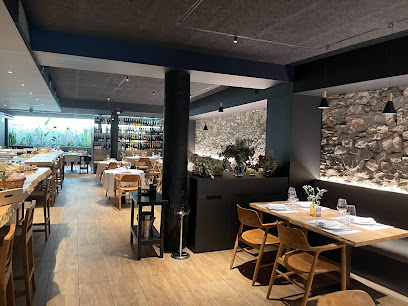
MiraKbé! Gastrobar & Restaurant
Savor exquisite dishes at MiraKbé! Gastrobar & Restaurant in Andorra la Vella – where tradition meets innovation in every bite.

DIAMANT Espai Gastronòmic
Experience unparalleled culinary artistry at DIAMANT Espai Gastronòmic in Andorra la Vella – where tradition meets innovation in every dish.

Restaurant Cafè l´Isard
Discover the vibrant flavors of Andorra at Cafè l'Isard - where tradition meets modern cuisine in the heart of Andorra la Vella.

Kökosnøt
Discover exquisite flavors and elegant dining at Kökosnøt in Andorra la Vella - where local meets global cuisine.

Markets, malls and hidden boutiques
Pyrénées Andorra
Discover Pyrénées Andorra, a vibrant department store in Andorra la Vella offering diverse shopping, dining, and cultural experiences for every traveler.

Duty Free
Shop luxury brands and local treasures at Duty Free in Andorra la Vella, where unbeatable prices meet a vibrant shopping atmosphere.

OPTIONS + - VIA MODA
Explore the latest trends at Options + - Via Moda, Andorra's stylish clothing destination in the heart of Andorra la Vella.
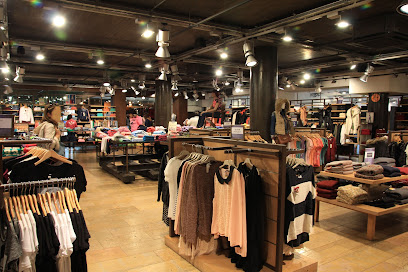
PYRÉNÉES ANDORRA - Outlet
Discover unbeatable deals on home goods and linens at Pyrénées Andorra - Outlet, your premier shopping destination in Andorra la Vella.

Gallery Andorra
Discover exquisite fashion at Gallery Andorra, the ultimate boutique for dresses, handbags, leather coats, and shoes in Andorra la Vella.

The Embassy Store Andorra Joyería y Relojería
Discover exquisite jewelry, stunning timepieces, and local artistry at The Embassy Store, the heart of Andorra la Vella's luxury shopping.
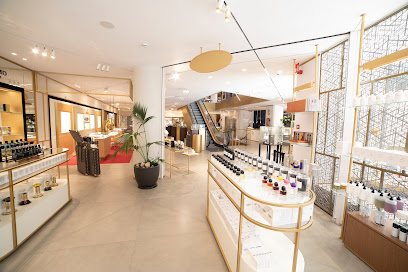
Lacoste Andorra
Discover stylish clothing at Lacoste Andorra, your go-to destination for chic fashion in the heart of Andorra la Vella.
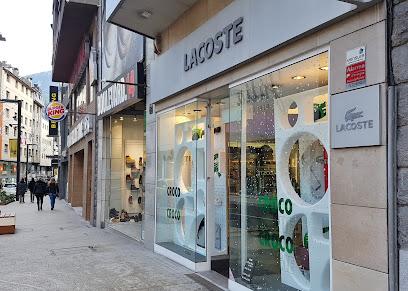
Aliexpress Store
Explore the whimsical world of the Aliexpress Store in Andorra la Vella for unique, quirky finds and unforgettable shopping experiences.

Levi's® La Vella Urban - Via Moda
Explore Levi's® La Vella Urban for a stylish shopping experience in Andorra la Vella, featuring top-quality jeans and fashion accessories for all.

V
Discover the ultimate fashion accessories haven in Andorra la Vella, where style meets elegance in every delightful piece.
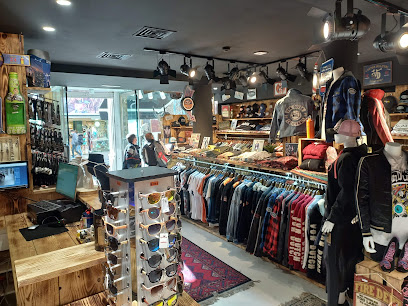
JEANS CULTE - VIA MODA
Discover the stylish essence of Andorra at JEANS CULTE - VIA MODA, your ultimate destination for trendy and comfortable clothing.
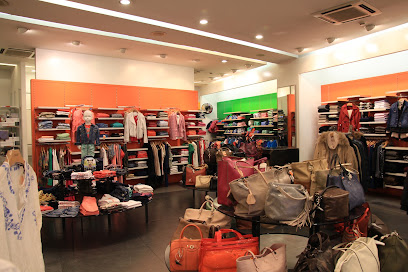
SHIBORI VIA MODA
Explore Shibori Via Moda in Andorra la Vella for trendy clothing and unique styles that enhance your travel experience.

Coco Bis
Discover contemporary fashion at Coco Bis, a premier clothing store in the vibrant heart of Andorra la Vella, offering styles for every taste and occasion.

Foot on mars
Discover the perfect blend of adventure and fashion at Foot on Mars in Andorra la Vella, your ultimate destination for sporting goods and stylish apparel.

BÀSIC MERCAT
Explore BÀSIC MERCAT in Andorra la Vella for exquisite watches, jewelry, and personalized services that create unforgettable travel memories.

Essential bars & hidden hideouts
Atelier by Aitor Estela
Discover the art of cocktail making at Atelier by Aitor Estela, where creative mixology meets a vibrant atmosphere in Andorra la Vella.

13,5° Wine Bar Andorra
Explore a world of exquisite wines and delightful tapas at 13,5° Wine Bar in the heart of Andorra la Vella.

EL RANA Bar Cocktail
Discover the vibrant nightlife at EL RANA Bar Cocktail, a top destination for creative cocktails and lively ambiance in Andorra la Vella.

LOLA - Cervecería Andorra
Discover LOLA - Cervecería Andorra, a vibrant bar offering local brews and tapas in the heart of Andorra la Vella, perfect for tourists seeking warmth and hospitality.

Bar Restaurant Las Vegas
Discover authentic Andorran flavors at Bar Restaurant Las Vegas, a cozy grill in the heart of Andorra la Vella, perfect for every food lover.

BAR ELS MANYOS
Experience the vibrant atmosphere and local flavors at Bar Els Manyos in Andorra la Vella, a must-visit for every traveler.

Macjou
Experience the best of Spanish tapas at Macjou in Andorra la Vella, where every dish is a celebration of flavor and culture.

Bar 4 i Tres Cockteleria
Experience the vibrant nightlife at Bar 4 i Tres Cockteleria, where expertly crafted cocktails meet a lively atmosphere in Andorra la Vella.

Bacco wine bar andorra
Discover exquisite wines and a cozy atmosphere at Bacco Wine Bar in Andorra la Vella, where every sip tells a story.

1001 Lounge Club
Discover the chic atmosphere and stunning views at 1001 Lounge Club, the perfect spot for relaxation and local nightlife in Andorra la Vella.

Insitu cocktail Bar
Discover the lively Insitu Cocktail Bar in Andorra la Vella for a unique mix of delicious cocktails and exciting live music events.

L'Hòstia Andorra
Experience the vibrant flavors of L'Hòstia Andorra, where local cuisine meets a lively bar atmosphere in the heart of Andorra la Vella.

O’VIN wine bar
Discover O’VIN wine bar in Andorra la Vella – where exquisite wines meet local culinary delights in a cozy atmosphere.

Pub Déjà vu In Situ
Discover the lively spirit of Andorra la Vella at Pub Déjà vu In Situ, where local culture and nightlife come together.

XO Lounge
Discover the vibrant nightlife and chic ambiance of XO Lounge, the perfect spot for cocktails and socializing in Andorra la Vella.
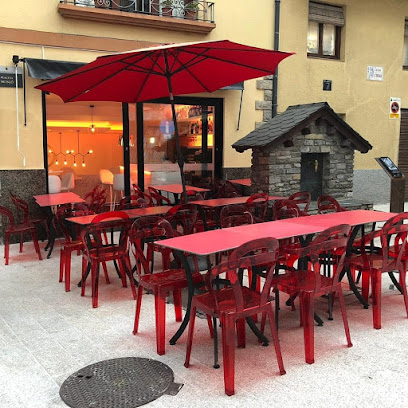
Travel experiences inspired by this city
Explore more travel diariesLocal Phrases
-
- HelloHola
[o-la] - GoodbyeAdéu
[a-de-ou] - YesSí
[si] - NoNo
[no] - Please/You're welcomeSi us plau/De res
[si us plaou/de res] - Thank youGràcies
[gra-sies] - Excuse me/SorryPerdó/Ho sento
[per-dou/ou sen-tou] - How are you?Com estàs?
[com es-tas] - Fine. And you?Bé. I tu?
[be/i tu] - Do you speak English?Parles anglès?
[par-les an-gles] - I don't understandNo entenc
[no en-tenc]
- HelloHola
-
- I'd like to see the menu, pleaseM'agradaria veure la carta, si us plau
[ma-gra-dia ve-ou-re la car-ta, si us plaou] - I don't eat meatNo menjo carn
[no men-jo carn] - Cheers!Salut!
[sa-lout] - I would like to pay, pleaseVoldria pagar, si us plau
[vol-dria pa-gar, si us plaou]
- I'd like to see the menu, pleaseM'agradaria veure la carta, si us plau
-
- Help!Ajuda!
[a-jou-da] - Go away!Marxa!
[mar-cha] - Call the Police!Truca la policia!
[tru-ca la po-li-sia] - Call a doctor!Truca un metge!
[tru-ca un met-ge] - I'm lostEstic perdut
[es-tic per-dut] - I'm illEstic malalt
[es-tic ma-lalt]
- Help!Ajuda!
-
- I'd like to buy...Voldria comprar...
[vol-dria com-prar] - I'm just lookingNomés estic mirant
[no-mes es-tic mi-rant] - How much is it?Quant val?
[quan val] - That's too expensiveAixò és massa car
[ai-sou es mas-sa car] - Can you lower the price?Podeu baixar el preu?
[po-deu bai-xar el preu]
- I'd like to buy...Voldria comprar...
-
- What time is it?Quina hora és?
[qui-na o-ra es] - It's one o'clockSón les una
[son les u-na] - Half past (10)Les deu i mitja
[les de-u i mi-tja] - MorningMatí
[ma-ti] - AfternoonTarda
[tar-da] - EveningVespre
[ves-pre] - YesterdayAhir
[a-hir] - TodayAvui
[a-vui] - TomorrowDemà
[de-ma] - 1Un
[un] - 2Dos
[dos] - 3Tres
[tres] - 4Quatre
[qua-tre] - 5Cinc
[cinc] - 6Sis
[sis] - 7Set
[set] - 8Vuit
[vuit] - 9Nou
[nou] - 10Deu
[deu]
- What time is it?Quina hora és?
-
- Where's a/the...?On és un/el...
[on es un/el] - What's the address?Quina és l'adreça?
[qui-na es la-dre-ça] - Can you show me (on the map)?Em pots ensenyar (al mapa)?
[em pots en-se-nyar (al ma-pa)] - When's the next (bus)?Quan és el proper (autobús)?
[quan es el pro-per (au-to-bus)] - A ticket (to ....)Un bitllet (a ...)
[un bi-tllet (a)]
- Where's a/the...?On és un/el...
History of Andorra la Vella
-
Andorra la Vella, the capital of the Principality of Andorra, traces its origins back to the Roman times. The area's strategic location in the Pyrenees made it a key transit point for various tribes and civilizations. Archaeological evidence suggests that the valleys were inhabited since the Neolithic era, but it was during the Roman Empire that the first organized settlements emerged.
-
The medieval period was transformative for Andorra la Vella. According to legend, Charlemagne granted a charter to the Andorran people in 805 AD for their assistance in fighting against the Moors. This charter laid the groundwork for Andorra’s unique political system. The region was under the protection of the Count of Urgell until the 13th century when it came under the joint suzerainty of the French and Spanish bishops, a relationship formalized in the Pareages of 1278 and 1288.
-
In 1419, the Consell de la Terra (Council of the Land) was established, marking a significant step in the political development of Andorra la Vella. This parliamentary body was created to represent the interests of the Andorran people and manage local affairs. It is considered one of the oldest parliaments in Europe and remains a cornerstone of Andorran governance.
-
The 20th century brought significant changes to Andorra la Vella. The introduction of new infrastructure, such as roads and electricity, transformed the city from a remote mountain village into a thriving urban center. The inauguration of the Consell General (General Council) building in 1973 and the establishment of the Andorran Constitution in 1993 further modernized the city's political landscape. Andorra la Vella became a symbol of the country's transition into a modern, sovereign state.
-
In the latter half of the 20th century, Andorra la Vella experienced an economic boom driven by tourism, banking, and retail. The city's duty-free status attracted millions of visitors annually, drawn by its shopping opportunities and picturesque landscapes. The development of ski resorts and luxury hotels further cemented Andorra la Vella's reputation as a premier tourist destination in Europe.
-
Andorra la Vella is home to numerous cultural and historical landmarks. The Casa de la Vall, built in 1580, served as the seat of the Consell General until 1993 and is a significant historical building. The Església de Sant Esteve, a Romanesque church dating back to the 12th century, is another architectural gem in the city. These landmarks offer a glimpse into the rich cultural heritage and historical evolution of Andorra la Vella.
Andorra la Vella Essentials
-
Andorra la Vella, the capital of Andorra, is accessible primarily by road. The nearest international airports are Barcelona-El Prat Airport in Spain (around 200 km away) and Toulouse-Blagnac Airport in France (around 195 km away). From these airports, you can rent a car, take a bus, or arrange for a shuttle service to Andorra la Vella. Several bus companies offer regular services from both airports to Andorra la Vella, making it a convenient and scenic journey through the Pyrenees.
-
Within Andorra la Vella, public transportation is efficient and reliable. The local bus network, operated by Cooperativa Interurbana Andorrana, connects different parts of the city and neighboring areas. Taxis are also available, but they can be more expensive. For a more flexible option, consider renting a car. However, parking can be limited in the city center. Walking is a great way to explore the compact city and its charming streets.
-
The official currency of Andorra is the Euro (EUR). Credit and debit cards are widely accepted in most establishments, including hotels, restaurants, and shops. ATMs are easily accessible throughout the city. Although card payments are common, it's advisable to carry some cash, especially for smaller purchases or in more remote areas where card facilities might not be available.
-
Andorra la Vella is generally very safe for tourists, with low crime rates. However, as with any travel destination, it is wise to remain vigilant. Keep an eye on your belongings in crowded areas and avoid leaving valuables in plain sight. There are no specific high-crime areas targeting tourists, but it’s always best to stay aware of your surroundings, especially at night.
-
In case of an emergency, dial 112 for immediate assistance. This number connects you to police, fire, and medical services. Andorra la Vella has well-equipped medical facilities, including the Nostra Senyora de Meritxell Hospital. It is advisable to have travel insurance that covers medical emergencies. Pharmacies are available for minor health issues, and many pharmacists speak English.
-
Fashion: Do dress smart-casual when dining out or visiting cultural sites. Avoid overly casual or revealing clothing. Religion: Do respect local customs, especially in religious sites. Dress modestly and be quiet and respectful. Public Transport: Do be courteous to fellow passengers and give up your seat for elderly or disabled individuals. Don’t eat or drink on buses. Greetings: Do greet locals with a friendly 'Hola' or 'Bon dia' and a handshake. Eating & Drinking: Do try the local cuisine and be open to trying new dishes. Don't rush meals; dining is a social and leisurely activity.
-
To experience Andorra la Vella like a local, visit the weekly farmers' market in Plaça del Poble where you can find fresh produce and local specialties. Explore the historic Barri Antic (Old Quarter) with its narrow streets and charming shops. Engage with locals, who are often friendly and willing to share insights about their city. Don’t miss the opportunity to hike in the nearby Coma Pedrosa Natural Park for stunning mountain views.
Trending Landmark in Andorra la Vella
-
Caldea Spa
-
Mirador Roc Del Quer | Canillo
-
La Noblesse du temps - de Salvador Dalí
-
Parc Central
-
Jardins de Juberri
-
El Refugi Alpí
-
Chester
-
Casa de la Vall
-
Pont de la Margineda
-
Madriu-Perafita-Claror Valley
-
Church of Santa Coloma d'Andorra
-
Barri Antic Hostel & Pub
-
Pont d'Engordany
-
Rec del Solà Trail
-
BORDA CAN ANDREU
Nearby Cities to Andorra la Vella
-
Things To Do in Escaldes-Engordany
-
Things To Do in La Massana
-
Things To Do in Encamp
-
Things To Do in Arinsal
-
Things To Do in Canillo
-
Things To Do in Ordino
-
Things To Do in El Serrat
-
Things To Do in Soldeu
-
Things To Do in Pas de la Casa
-
Things To Do in Girona
-
Things To Do in Toulouse
-
Things To Do in Lleida
-
Things To Do in Barcelona
-
Things To Do in Lourdes
-
Things To Do in Tarragona
















